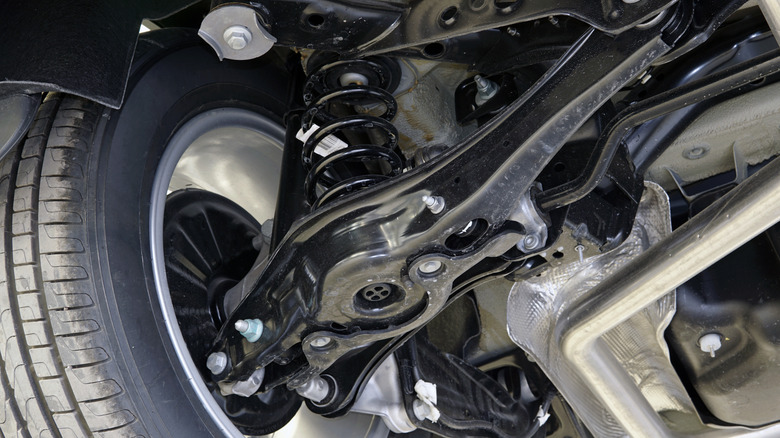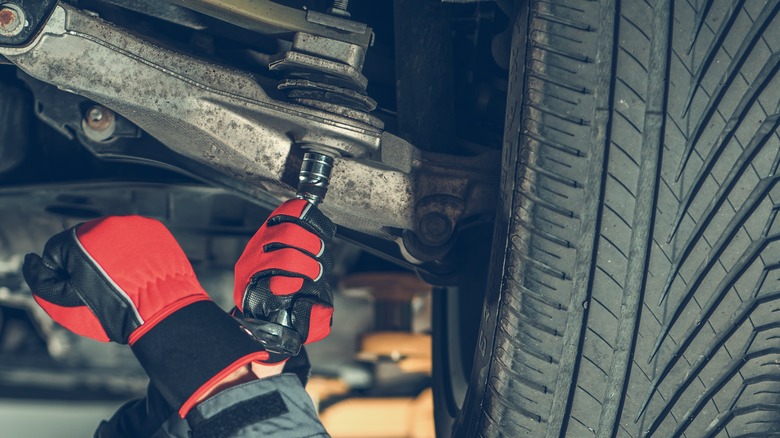The Easy Way To Tell If Your Vehicle Needs New Suspension (Before It's Too Late)
The engine and transmission are not the only parts of a car that need routine checking. Underneath any vehicle are suspension, steering, and driveline components that work in unison with the engine and gearbox to make your driving smooth, safe, and comfortable. The steering and suspension, in particular, are intertwined and are designed to absorb bumps from potholes and road irregularities while keeping your car stable when cornering or in a straight line.
Depending on the design, a typical automotive suspension consists of shock absorbers (or dampers), coil springs, shock mountings, anti-roll bars, stabilizer links, ball joints, tie-rod ends, control arm bushings, and the steering rack. Since there are so many parts, and most are interconnected, a single failure could result in significant repair bills when left untreated.
For instance, worn dampers could increase the bounce and rebound of the suspension, resulting in unnecessary play and early deterioration of bushings or shock mountings. It's why early detection of worn suspension parts and paying close attention to symptoms of wear and tear might save you money when visiting the repair shop.
Signs your vehicle needs suspension repair
The most noticeable symptom of bad auto suspension is unnecessary noises from the undercarriage when driving or braking. Those annoying clunks, squeaks, knocks, rattles, thunks, and grinding noises point to worn-out suspension or steering parts like the control arm bushings, tie-rod ends, ball joints, sway bar links, wheel bearings, or constant velocity (CV) joints.
Meanwhile, uneven tire wear could also mean your vehicle's shocks, struts, or springs might need replacing. As it turns out, the wheels and tires are also part of the steering and suspension. Paying close attention to uneven tire wear could help you diagnose a failing suspension component. On the other hand, it could be an alignment issue, but early detection of uneven or unusual tire wear is vital to saving hundreds or thousands in repair bills later on.
On the other hand, a vehicle that bounces after driving over bumps may have worn shock absorbers. You could verify this by the presence of leaks around the shocks or the insides of the wheel. If not, you could push down on one corner of the car and see how the suspension bounces back. Your car might need new shocks if it bounces more than once before returning to the standard height after pushing. Wonky dampers will also deliver an uncomfortable ride, a loose steering feel, poor handling, or crashing noises when driving over potholes.

